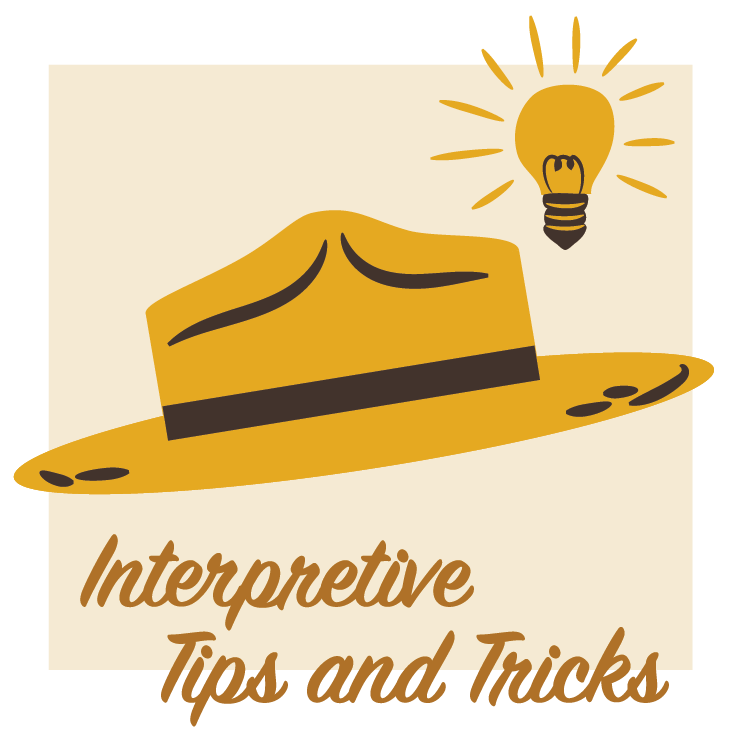
Interpretive Tips and Tricks – The Power of Pragnanz
Hello Esteemed Colleagues—The purpose of this article and subsequent articles is to succinctly highlight various interpretive techniques that all of us can use in our interpretive endeavors. While I am starting with this article, I am reaching out to anyone interested in sharing techniques and tips for future articles. Please reach out to me at elizabeth.hammack@parks.ca.gov if you would like to share tips/techniques for future editions.

The Power of Pragnanz
Have you ever read a book or watched a movie where the ending brought you back to the beginning? Do you remember that satisfying feeling and sometimes an “ah-ha” moment when the conclusion brought you back to the start? Think about the beginning of the “Forest Gump” movie when the feather is falling from the sky. Then, at the end, one lone feather falls, and you know that the ending has arrived. You feel whole and complete. Pragnanz is a German word that can refer to wholeness, completeness, or unity. Another definition of Pragnanz Theory is understood as the law of simplicity, reflecting the fact that the human mind prefers order to chaos. Pragnanz can provide organization to a program. In the field of Interpretation, we refer to pragnanz as connecting the ending back to the beginning. According to Dr. Sam Ham, “When you introduce a memorable idea or scenario early in the presentation, and then come back to it again at the end, it seems to bring everything you’ve been talking about back to the beginning, it gives the talk a quality of being complete and whole, rather than only partly finished and it reassures the audience that it now has the whole story and that there are no loose ends.” This same sense of closure can also be experienced at the end of a good book, movie, or play when pragnanz is used effectively.
How can you employ pragnanz in your interpretive programs? As interpreters, stating your theme in the introduction and coming back to it in the conclusion is a surefire method of ensuring people get your theme and of utilizing pragnanz. You can build on this by creating additional methods of pragnanz.
Start with a question and end with the answer. Or end with that same question and perhaps, based on the content of your program, the audience will have a different response to that initial question. You can even start with the answer and end with the question. You can start a story and complete the story at the end. The possibilities are endless! Let your creative juices flow and see where they take you.
I recently had the honor of coaching high school students on their scholarship acceptance speeches. I spent time with each student learning their stories and helping them to craft speeches in their own words. Many used pragnanz and it made for a powerful presentation. One multi-racial student started her speech with, “Have you ever felt like people are trying to put a label on you? ‘What are you?’ is a question I am constantly asked.” Her speech continued as she shared her high school journey, growing up with a Lebanese father, and grandparents, and an Asian mother who was adopted by a white family. She shared what it was like for her and her mom to be the only people of color at a large family gathering on her mother’s side. She shared her future goals for college and beyond. Then, at the end of her speech, she said, “So if you were wondering ‘What am I’- you should know that I am the kind of person who is dedicated to my community, committed to fighting for change, social justice, and equity for all.” Her speech was extremely well-received and whether the audience realized it or not, they had just experienced pragnanz. That’s the thing about pragnanz, it doesn’t have to be overtly obvious. It’s a technique that when fully used and creatively presented, provides the audience with a sense of satisfaction that they’ve heard the complete story. It ties a presentation together.
So, the next time you get towards the end of a book or movie and realize that the imagery, words, and story are familiar and perhaps even bringing you back to the start – you will know that you’ve just experienced pragnanz.
—Elizabeth Hammack
